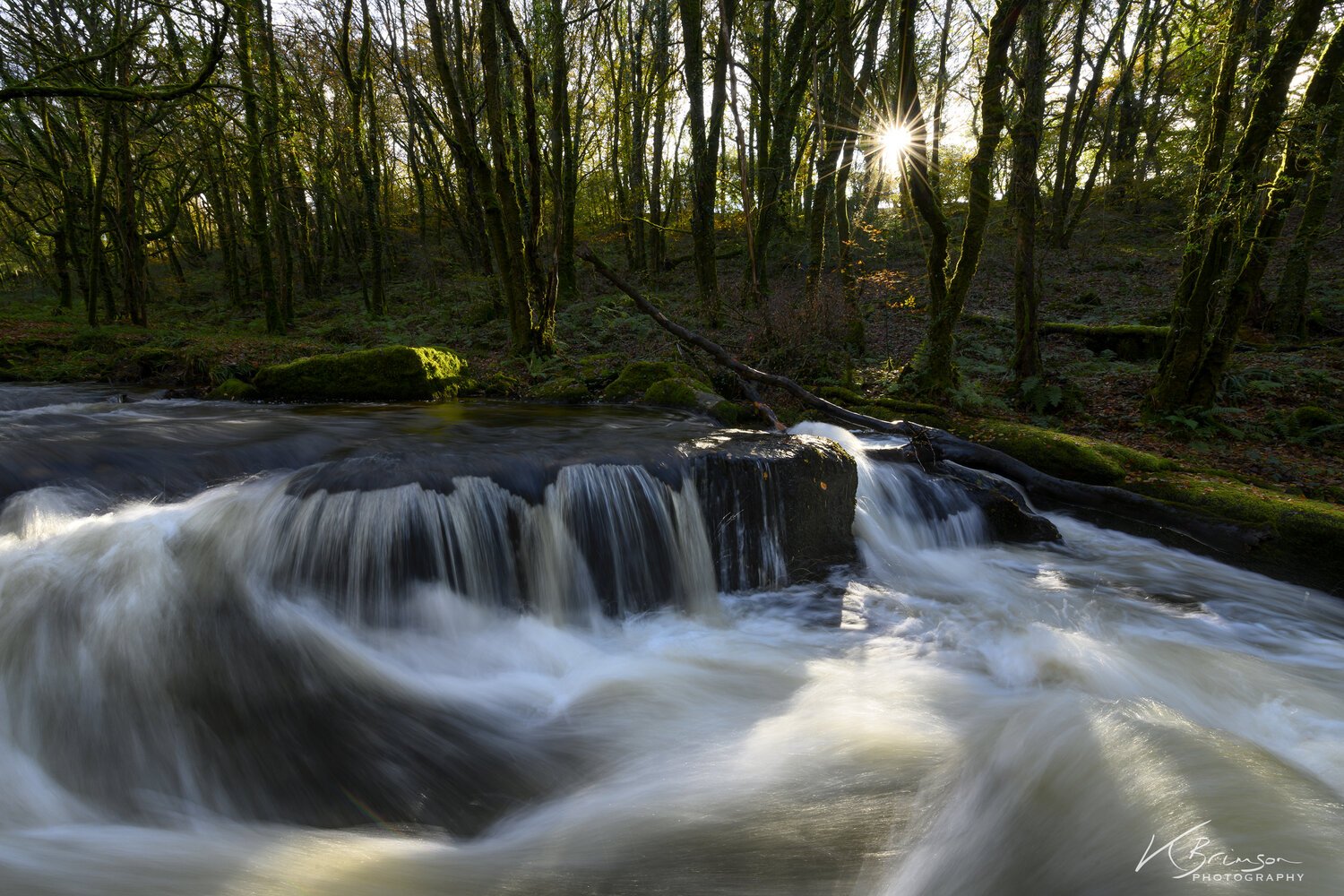Golitha Falls
“The Lady of the Lake, her arm clad in the purest shimmering samite, held aloft Excalibur from the bosom of the water, signifying by divine providence that I, Arthur, was to carry Excalibur. THAT is why I am your king.”
Olive & Co Café
While on Google Earth researching a small stone circle to visit on Bodmin Moor, I happened to see a nearby coffee shop icon for Olive & Co Café. Serendipity strikes again! We had an amazing late breakfast here on Tuesday morning. The café sits overlooking the beautiful manmade Siblyback Lake.
Their homemade cinnamon buns were some of the best we’ve ever enjoyed 🤤 and the mocha was also very good.
I had some trepidation over the inclusion of kimchi and beetroot ketchup in the breakfast burrito, but my fears were allayed after the first bite. They did an amazing job blending tastes and textures and I’m so happy I followed my gut and gave it a go! Absolutely delicious! 😋
Hurlers Stones
Just down the road from Olive & Co Café is the little village of Minions, which is surrounded by prehistoric stone circles and burial mounds, along with the remains of several tin mining engine houses.
Hurlers Stone Circles are three late Neolithic or early Bronze Age stone circles arranged in a line, a grouping unique in England.
On Google Earth you can make out all three stone circles (the bottom circle has fewer remaining stones and is thus a little more difficult to discern).
According to legend, the stones are the remains of men petrified for playing hurling on a Sunday. (Hurling in this context is an outdoor team game of ancient Gaelic Irish origin played by men. The same game played by women is called camogie.)
The middle stone circle with a tin mine engine house at the back right and the upper stone circle at the back left.
Amanda in the middle of the upper circle.
Stowe’s Hill
Further afield from Hurlers Stones is a small tor known as Stowe’s Hill.
On the way toward Stowe’s Hill, I encountered this very unusual cluster of wild moorland ponies and domesticated cattle.
The Cheesewring is a granite tor on Stowe’s Hill. Somewhat surprisingly, it is a natural geological formation of granite slabs shaped by weathering.
Its unusual name seems to have come from the cheese in cider-making. In this instance cheese has nothing to do with the dairy product, but the process in which apples are crushed to squeeze out the juice and then topped with a layer of straw and repeated several times over. Each layer is called a cheese, and it’s not difficult to see the similarities.
Below Stowe’s Hill is Cheesewring Quarry. Well known London landmarks such as Tower Bridge, Tate Britain, and the Albert Memorial all used in their construction granite from the Cheesewring Quarry. Quarried stone was even transported as far away as India and Singapore.
From Stowe’s Hill, Bodmin Moor stretches out—a remote, heather-covered upland granite moorland, and one of Cornwall's designated Areas of Outstanding Natural Beauty (AONB).
Golitha Falls
A lovely afternoon stroll along the sun dappled path to Golitha Falls, the peaceful River Fowley and various species of birds providing accompaniment.
The path doesn’t take you right to the falls exactly, and we didn’t want to scramble our way there, so we just enjoyed the solitude and some time “forest bathing.”
We don’t want you to go away disappointed though (or to think we missed out on seeing some iconic waterfall), so here is an interwebs picture for your viewing pleasure. As you can see, Golitha only squeaks past the minimum qualifications to hold the title “waterfall.”
Dozmary Pool
Also on Bodmin Moor lies Dozmary Pool, a freshwater lake roughly a mile in circumference or, as Henry VIII’s historian John Leland put it, the length of eleven arrow shots.
The name Dozmary likely comes from Middle English “tos mery,” which translates as “pleasant drinking bowl.” It is truly an ancient pool, and people have been living and working around its edges for well over 5,000 years.
Being ancient, it has naturally acquired many legends. There is a long-held myth of an underground tunnel from the bottom of the pool which connects it with the south coast—a bundle of sticks was once thrown into the pool and was some time after seen in Fowey harbor (a coastal harbor directly south of Bodmin).
Another legend is of Old Storm Woman who lives beneath the water, where no light reaches. Like a strange inland mermaid, the Old Storm Woman stirs up the water from the peaty depths of the pool and creates the wind, casting it out angrily onto the moor.
(Spoiler Alert—the pool is only 9 feet deep and lacks a tunnel.)
The most enduring legend, however, is that of the mysterious Celtic goddess, a Lady of the Lake, who gave King Arther his magical sword Excalibur.
Legend says that Arthur obtained the British throne by pulling a sword from an anvil sitting atop a stone that appeared in a churchyard on Christmas Eve. Later, when Arthur is at the brink of death in battle, he orders Excalibur cast into the enchanted lake (Dozmary Pool). When this is done, a hand emerges from the lake to catch it.
In another version of the legend, Arthur breaks Excalibur from the Stone while in combat and, on Merlin's advice, they go to Dozmary Pool where a Lady of the Lake gives Arthur Excalibur.
Nothing on the scale of divine mystery, but Dozmary Pool certainly was enchanting—another in a string of bucolic settings that made Bodmin Moor a truly special place to visit.



















